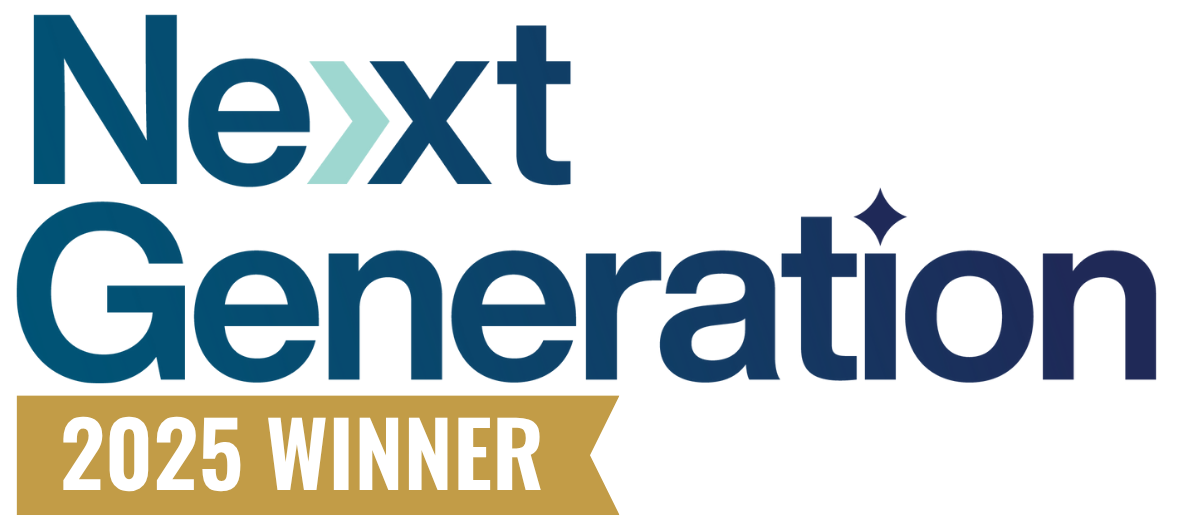In the market for a cyber insurance policy?
Here’s something you need to know: cyber insurance carriers reject 44% of claims because businesses don’t meet basic security thresholds.
With the rise of cybercrime costs and the sophistication of attacks, carriers have fundamentally changed their approach to risk assessment.
Today's cyber insurance requirements aren't suggestions—they're mandatory security controls that determine whether your organization qualifies for coverage at all, and more importantly, what you'll pay for it.
Understanding and implementing these requirements can mean the difference between paying premium rates for basic coverage or securing comprehensive protection at competitive costs.
Key Takeaways
- 44% of cyber insurance claims are rejected because businesses fail to meet basic security requirements
- Multi-factor authentication is now mandatory for 51% of policies, with EDR, backup protocols, and employee training also required
- Organizations implementing PAM, SIEM, and SOC monitoring often qualify for preferred rates and enhanced coverage terms
- Annual penetration testing, security audits, and incident response plans are mandatory for policy approval
- Proactive security assessments identify gaps and ensure coverage qualification before applying for cyber insurance
What Is Cyber Insurance?
Cyber insurance is specialized coverage that protects businesses from financial losses related to cyber attacks, data breaches, and other cyber threats. Think of it as another form of business insurance—protecting all of the digital infrastructure that helps you run your company.
Cyber insurance policies cover costs including incident investigation, legal fees, customer notification, data recovery, business interruption, and regulatory fines.
A Look Inside The Cyber Insurance Market 2025
The cyber liability insurance market has experienced unprecedented growth, with global premiums reaching $16.3 billion in 2025, according to Munich Re. This represents nearly triple the market size from just five years ago, yet it still accounts for less than 1% of global property and casualty insurance premiums—indicating enormous growth potential ahead.
However, this expansion comes with stricter qualification standards. Cyber insurance premiums jumped 50% in 2023, though rates decreased by 5% in Q4 2024 as the market stabilized. The key differentiator? Organizations with strong security controls are securing better rates, while those with inadequate protections face premium increases or outright denial.
Carriers have shifted from reactive pricing to proactive risk assessment. Munich Re projects the market will reach $29 billion by 2027, but access to favorable coverage increasingly depends on demonstrating comprehensive cybersecurity measures.
The message is clear: security controls are prerequisites for coverage approval.
5 Core Cyber Insurance Requirements Every Business Must Meet
Meeting cyber insurance coverage requirements has become increasingly complex as carriers demand proof of specific security implementations.
1. Multi-Factor Authentication
51% of businesses must now have multi-factor authentication just to qualify for coverage. MFA requires users to provide multiple verification factors beyond passwords, significantly reducing account takeover risks.
Insurers view MFA as essential because credential theft accounts for 55% of all ransomware attacks. Organizations should implement conditional MFA that activates based on risk factors like new locations or devices, along with strong password policies requiring complex, unique passwords across all systems.
2. Endpoint Detection & Response
EDR solutions monitor all endpoints and computer systems for malicious activity and provide real-time threat response capabilities. Insurers require EDR because it enables rapid detection and containment of threats before they spread throughout networks.
Modern EDR tools use behavioral analysis and machine learning to identify sophisticated attacks that traditional antivirus solutions miss.
3. Data Backup and Recovery Protocols
Robust backup strategies are fundamental requirements, but insurers now demand more than basic backups. Organizations must maintain offline, immutable backups stored separately from primary networks.
The 3-2-1 backup rule (three copies, two different media, one offsite) has become standard, with recovery testing documentation required to prove organizations can quickly restore damaged computer systems and backup integrity.
Furthermore, having a solid data recovery plan demonstrates proactive measures to mitigate potential losses and enhances the insurer's confidence in providing coverage.
4. Network Segmentation Requirements
Network segmentation limits lateral movement during cyber attacks by isolating critical systems and data. Insurers require documented network architecture showing how sensitive systems are separated from general user access. This includes implementing zero-trust principles where every network request requires verification.
5. Employee Training
Human error remains a leading cause of successful cyber attacks, making cybersecurity training mandatory for coverage. Insurers require documented training programs with regular phishing simulations and measurable results. Training must cover current threat vectors, compromised data identification, incident reporting procedures, and security policy compliance.
Advanced Security Controls That Lower Your Cyber Insurance Costs
While basic security controls ensure coverage eligibility, advanced controls demonstrate organizational maturity and reduce premium costs.
Organizations implementing these measures often qualify for preferred rates and enhanced coverage terms.
Privileged Access Management (PAM)
Privileged Access Management (PAM) has become essential for larger organizations or those handling sensitive data.
PAM solutions control and monitor access to critical systems, ensuring only authorized personnel can access high-value targets. Insurers increasingly require PAM for business-critical systems as it prevents lateral movement during breaches and provides detailed audit trails for compliance requirements.
Security Information and Event Management (SIEM)
Security Information and Event Management (SIEM) platforms provide real-time analysis of security alerts across the entire IT infrastructure. Advanced threat detection tools like SIEM are becoming standard requirements for organizations seeking comprehensive coverage. These systems correlate data from multiple sources, enabling rapid identification of sophisticated attack patterns that single-point solutions might miss.
24/7 Security Operations Center
24/7 Security Operations Center monitoring represents the gold standard for cyber risks, threat detection and response. Organizations with dedicated security operations services demonstrate continuous vigilance that insurers value highly. These teams provide human analysis of automated alerts, ensuring genuine threats receive immediate attention while reducing false positives that plague automated systems.
Vulnerability Management
Vulnerability management programs require systematic identification, assessment, and remediation of security weaknesses. Regular vulnerability assessments are essential for cyber insurance qualification, with insurers expecting documented patching schedules and risk prioritization frameworks.
Organizations should implement automated scanning tools complemented by annual penetration testing from certified security professionals. The NIST Cybersecurity Framework and ISO 27001 standards provide comprehensive guidance for implementing these advanced controls effectively.
Documentation and Risk Assessment Requirements for Policy Approval
Cyber insurance underwriters require extensive documentation proving your organization's security posture before approving coverage.
Annual Pen Testing
Annual penetration testing has become mandatory for most cyber insurance policies, with insurers requiring reports from certified ethical hackers who attempt to breach your systems using real-world attack methods.
These assessments must be conducted by qualified third-party security firms and include both network and application testing.
Results must demonstrate not only vulnerabilities discovered but also evidence of remediation efforts and timeline compliance.
Proper Security Audit Documentation
Security audit documentation requires comprehensive records of all security policies, procedures, and technical implementations. Insurers examine:
- Network diagrams
- Access control matrices
- Backup verification logs
- Incident response procedures.
Organizations must maintain current documentation showing security control effectiveness and regular review cycles.
Incident Response Plan Documentation
Incident response plan documentation must include detailed procedures for detecting, containing, and recovering from cyber incidents. Cyber insurance cover plans require specific roles, communication protocols, and recovery procedures that insurers can verify through tabletop exercises and documented testing results.
Preparing this documentation proactively streamlines the insurance application process and demonstrates organizational security maturity. Organizations considering cyber insurance should request a comprehensive network assessment to identify documentation gaps and ensure all required evidence is properly maintained before beginning the application process.
Emerging Cyber Insurance Requirements
The cyber insurance landscape continues evolving as new threats emerge. Forward-thinking organizations should prepare for upcoming requirements that will soon become standard across the industry.
- AI Risk Management: These protocols are becoming essential as artificial intelligence is a top concern for insurers and the industry at large. Insurers expect documented AI governance frameworks addressing data privacy, model security, and automated decision-making oversight.
- Supply Chain Security Assessments: These address the growing threat of third-party compromises.
- Zero-Trust Architecture: This implementation represents the future of network security, with insurers beginning to favor organizations that have moved beyond traditional perimeter-based defenses.
- CISO Liability Coverage: With this, you can address personal executive risk as some carriers now offer standalone policies for chief information security officer liability.
Organizations should review current regulatory compliance frameworks to stay ahead of these emerging requirements.
Secure Better Cybersecurity Insurance Rates with Comprehensive Security Assessments
Meeting cyber insurance requirements isn't just about compliance—it's strategic business protection that directly impacts your bottom line.
Organizations with strong security controls are securing better rates, while those with inadequate protections face premium increases or outright denial.
The investment in proper security infrastructure pays immediate dividends through reduced insurance costs and long-term protection against costly cyber incidents.
Don't wait until renewal time to discover security gaps that could jeopardize the right cyber insurance policy for your business.
Schedule a comprehensive network assessment to identify vulnerabilities, implement required security controls, and ensure your organization meets all cyber coverage requirements before applying.





